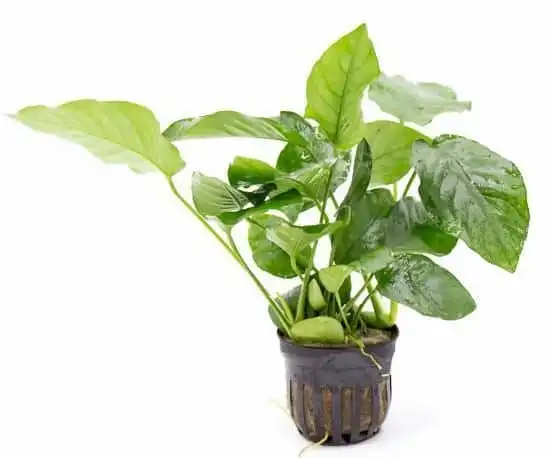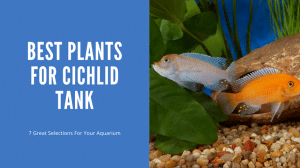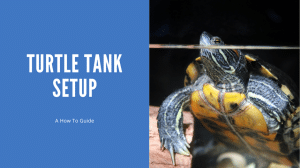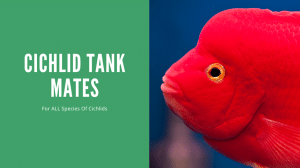Thank you for visiting! By the way… any links on this page that lead to products on Amazon and other stores/partners are affiliate links Aquarium Store Depot earns a commission if you make a purchase.
Betta fish — or Siamese fighting fish — are the colorful, beautiful freshwater friend that any true hobbyist wants to see in their tank.
They’re glorious to look at, yet, what is there to know about these underwater jewels?
Here are three quick facts:
- Betta fish’s tails come in different shapes
- They can live around 2-3 years
- They enjoy a touch of warmth in their water
Now, for one burning question: do betta fish enjoy ghost shrimp sharing a tank with them?
The short answer: ghost shrimp and betta fish can live together as pets. You can also use ghost shrimp to feed your bettas.
However, there’s more to pairing the two than what meets the eye. You should follow our simple care guide, which will help transform you — the true hobbyist — into a fishkeeping master.
Are you just looking for betta fish care? Learn how to create a thriving betta tank.
If not, let’s start on how to care for ghost shrimp so that they can happily live with betta fish.
Keeping Ghost Shrimp — The “Glass” Crustacean
Let’s break down what we learned in this video from myaquariuminfo into a simple bullet list, focusing on keeping ghost shrimp as pets.
- Keep your ghost shrimp in freshwater, with water conditions between 70-80°F
- Make sure to include aquatic plants in your tank.
- Ensure you have a strong water filter, so your water is nice and aerated.
- Make sure there is a calm current in the tank.
- Keep your ghost shrimp with peaceful fish, snails, or other shrimp.
- Ghost shrimp are easy to feed but prefer sinking granules pellets and wafers.
Note: Betta fish generally won’t eat ghost shrimp due to the betta’s small size, but they may try to if you feed the betta improperly.
Now, let’s take a look at caring for betta fish.
Caring for Betta Fish — The Colorful Fighting Fish
As before, let’s break down what we found in this video into an actionable bullet list.
- Keep the water’s current calm.
- Feed betta fish pellets, flakes, and live blackworms (weekly).
- Ensure the betta has a lot of space (aquariums of 2.5 gallons or bigger); avoid bowls and aquariums without an air pump.
- Keep pH levels at around 7 pH.
- Keep temperatures 75-82°F
- Make sure there are driftwoods or leaves in the aquarium for the Betta fish to rest on.
Now, let’s draw up a comparison of keeping both bettas and ghost shrimp.
The Perfect Conditions for Both
| Conditions | Betta Fish | Ghost Shrimp |
| Scientific Name | Betta splendens | Palaemonetes paludosus |
| Common Name (Species) | Betta Fish | Ghost Shrimp, Glass Shrimp |
| Family | Osphronemidae | Palaemonetes |
| Origin | Asia | North America |
| Care level | Easy | Easy |
| Average Life Span | 3 years | 2 years |
| Water Temperature | 70-80°F | 75-82°F |
| pH Levels | 7 pH | 7-8pH |
| Current levels | Calm | Calm |
| Tank decoration | Driftwoods and leaves | Aquatic plants |
As you can see, the conditions in which both species thrive are relatively the same, so go ahead and keep your ghost shrimp and betta together.
With this information, you’re equipped to raise both. Yet, how can we go from raising to caring? We mentioned having driftwood and leaves for decoration, but what else can you include in your aquarium?
Decoration
Our betta fish care guide covers decoration in-depth, and the best part about following this guide is that most of what we list is suitable for ghost shrimp, too. For example, let’s talk about Marina Naturals Plant.
Silk plants that are designed to be gentle on fish with fancy fins like Bettas and Fancy Goldfish
Our care guide talked about how traditional plastic plants are dangerous for bettas because their sharp edges can cut betta’s delicate fins. Marina’s Natural Plant is a softer alternative to sharp-edged plastic plants, and fortunately, they’re perfect for ghost shrimp.
Simply because ghost shrimp enjoy having hiding places. By using multiple Marina Naturals Plants, you’ll be giving your ghost shrimp hiding spots without risking your betta’s fins.
Rocks are a great choice too. Using a coconut shell means you’ll once again stay away from sharp edges, and you’ll give your ghost shrimp a cave to hide in — something they’ll appreciate when they’re molting.
These Coconut shells are ideal Betta fish homes. Smooth to the touch, these will not damage your Bettas delicate fins
Note: The above shell has a small entrance, meaning it might be too small for your bettas to fit in — but it’s perfect if you want an exclusive ghost shrimp cave (though be careful choosing this one as there is a risk your betta fish may get caught or stuck inside).
Don’t Forget About Aquatic Plants!
Artificial plants are good to talk about for those who do not want to deal with added complexity in their setups, but there are excellent beginner aquarium plants that are perfectly suited for ghost shrimp and bettas. One of my favorites to use is Anubias barteri or nana. Other great choices are java fern and java moss. All of these work great for a easy to maintenance “low tech” planted tank setup.
What Is Molting?
The more you feed your ghost shrimp, the bigger it’ll get. However, its shell won’t grow with it. This means eventually, the ghost shrimp will need to shed their shell in place of a new one.
Here’s the process in action:
This process takes some time, and the ghost shrimp will be more vulnerable while they’re undergoing it. This can cause problems if you have bettas and other tank mates since they can accidentally hurt your ghost shrimp by simply swimming into it.
This is when having lots of hiding places, such as artificial plants, caves, or live plants, will come in handy. Your ghost shrimp will instinctively hide where it’s safe while the new shell develops.
However, this raises the question:
What to Do With the Old, Molted Shell?
Fortunately, you don’t need to do anything with a ghost shrimp’s old molted shell. Most of the time, it will be eaten by the ghost shrimp who shed it or by other ghost shrimp in your tank.
However, when you spot the shell, there are some precautions you need to take since your ghost shrimp is at risk of osmotic shock.
In short: try to avoid changing your tank’s water.
If you have to, keep the replacement water at the same temperature and pH level of the water already in the tank — and add the replacement water slowly, so it doesn’t shock your molting shrimp.
Also, keep a close eye on your molting shrimp. Sometimes, you’ll spot a thin white line circling their body. Unfortunately, this is a bad sign. The white ring of death means the shrimp has shed too much of its shell, making it more challenging for it to finish the molting process.
Unfortunately, in most cases, this is fatal for your shrimp, and there’s not much you can do but keep watch and hope the shrimp finishes the process.
Overall, however, if the entire molting process is successful, you’ll recognize the molted shell loose in the tank.
Many people confuse this molted shell with the carcass of their ghost shrimp — but this isn’t the case at all. The shell will appear transparent and empty, floating around your tank with no clear direction.
Once you know all about the molting process, there isn’t much more to learn about ghost shrimp.
At this point, you should have an entire tank full of happy aquarium fish, and that means you’re ready to move to more advanced fishkeeping.
Let’s talk about breeding.
Breeding
- Make sure to set up a special breeding tank. Small fry are incredibly fragile, and a male might even see them as a threat once the freshwater fish start swimming independently. Therefore, the male will have to be returned to the original tank before the small fry is. The breeding tank should be a spacious tank, covered in plastic wrap so that it remains humid, with lots of plant life.
- Make sure the male betta is energetic, has bright colors, and undamaged fins (the female will be the picky one).
- When the bettas are between 4-12 months of age, add the female betta into the breeding tank, with 3-5 inches of water.
- Add lots of moss, so the female has places to hide.
- After 30 minutes, add the male betta to the tank. The two should react to one another. The male’s colors will brighten, and he may attempt to bite the glass. Conversely, the female will darken and display vertical lines along her midsection (if she’s interested).
- The male will build a nest of bubbles. This is the fun part! (credits to aussie aquatic)
- The female will inspect the bubble nest. If it’s not up to her standard, she’ll either swim away or destroy it. If it is up to her standard, the male and female will chase each other and bite. This is normal behavior.
- The fish will, after the mating dance, breed. Over the next two days, the betta will guard the bubble nest until the small fry eventually hatch.
Now, let’s take a look at breeding ghost shrimp

Breeding ghost shrimp takes a lot less than betta fish. Once more, you can refer to our table above for the optimal water conditions. However, make sure you have a specialized breeding tank set up as before.
However, this time, you don’t need to wrap the tank in plastic to create humid conditions.
To start, keep the ghost shrimp in your primary aquarium.
- Ensure there are both male and female ghost shrimp are in the tank (females are larger and have a green saddle on their underside. Males are smaller, without a saddle).
- The female should produce eggs every 1-2 weeks. You should see these attached to her legs. Allow the male several days to fertilize them.
- At this stage, move the female into the breeding tank, so the other fish don’t eat the young. Once the eggs hatch (up to three weeks later), move the female shrimp back into the main tank, so she also doesn’t eat her own young.
Frequently Asked Questions
Can I Have Them Together?
Yes. Here are the three best types of dwarf shrimp species you can keep with your betta.
- Ghost shrimp
- Cherry shrimp
- Amano shrimp
With cherry shrimp, you’re at more risk of the betta eating the shrimp than you are with ghost shrimp. That’s because the males are much smaller than the ghost shrimp. Try to buy female cherry shrimp, which are much larger.
Amano shrimp are much larger than both ghost and cherry shrimp, so there’s no risk of the betta eating them. Yet, that doesn’t mean they’re the best tank mates. Because of their size, they may annoy your betta — especially at feeding time, where they’re liable to be more aggressive.
However, all shrimps listed above require much the same water conditions as bettas do. So there’s no risk of putting them in an unhealthy environment if you’re maintaining good conditions for your betta.
Do They Eat Poop?
Ghost shrimp will eat Betta poop. It contains many nutrients that are good for them. However, consider feeding ghost shrimp the following:
– Algae
– Fruit
– Frozen food
– Insects
– Mosquito larvae
– Flake foods
It should be noted; ghost shrimp will eat most foods you put into your tank. Just make sure the food isn’t too big for them. With baby shrimp, however, try to keep to algae.
How Many Can You Have in a 5 Gallon Tank With a Betta?
The best bet is to start small and see if your betta is bothered by the ghost shrimp. If your betta isn’t, you can keep adding ghost shrimp — but in a 5-gallon fish tank, a safe bet is to not go beyond ten ghost shrimp.
How Often Should I Clean My Tank?
This depends on several factors, such as your fish tank size. However, we recommend changing some of the water every few days (only 30-50%). Also, clean the tank at least once a week to prevent toxic waste from building up.
Can They Live With Guppies?
Just like bettas, Ghost Shrimp and guppies can live together. The guppies may try to eat the smaller shrimp, but you shouldn’t have any problems for the most part. Here are the perfect conditions for ghost shrimp and guppies:
| Conditions | Guppies | Ghost Shrimp |
| Water Temperature | 75-82°F | 75-82°F |
| pH Levels | 7-7.2 pH | 7-8pH |
| Current levels | Calm | Calm |
| Tank decoration | Java Moss with sand substrate | Live plants |
Additional Resources
There are some really good books available that go beyond the scope of what we discussed today. We’d recommend checking these out and purchasing them if you want to be a true hobbyist.
Care Guide For Tank Set up, Diet, Mates, & Breeding
Ghost Shrimp Care is good value and well worth it. It covers each type of ghost shrimp — or palaemonetes paludosus as the book so refers to them — and it also covers basic care for the shrimp and contains an easy-to-follow guide on both setting up a prawn tank and breeding.
A 30-page e-book that offers a more comprehensive look on Ghost Shrimp care. A great way to enhance your shrimp keeping skills!
The book was written by Viktor Vagon. The information it covers is quite basic, but it’s a convenient little handbook to keep by your fish tank as a supplement to this above guide.
The Betta Bible
The Betta Bible is the best book you can buy on betta care and goes into much more detail than our guide. It’s expensive — but given the information, it contains you won’t regret purchasing it. Even if just for the gorgeous 150 picture of betta’s to look at contained within.
The Best Book About Keeping Bettas!
With over 300 pages and written by Ecologist Dr Martin Brammah. This offers one of the best deep dives into the world of Betta care!
It was written by Dr. Brammah and, for the true hobbyist, isn’t one you want to miss out on, especially if you pick up the Kindle version at a much lower price. It’s 300 pages of betta information that’s not only essential but interesting and wonderful at the same time.
Closing Thoughts
Keeping Ghost Shrimps and betta together is an excellent way for a true hobbyist to explore the world of aquarium keeping.
Bettas are low maintenance, and with ghost shrimp sharing much the same conditions as bettas — they should get on nicely — providing you keep everyone well fed.
There are great opportunities to breed both species if you want to get more advanced, but if not, both ghost shrimp and bettas will add vibrant life to your aquarium. If you have any questions or concerns, don’t hesitate to comment below. Thanks for reading!
- About the Author
- Latest Posts
I’m thrilled that you found Aquarium Store Depot! Here you’ll find information on fish, aquariums, and all things aquatics related. I’m a hobbyist (being doing this since I was 11) and here to help other hobbyists thrive with their aquariums! I adhere to a high quality Editorial Process and Review products with real life field usage and practical analysis.











This has to be one of the comprehensive guides of betta / ghost shrimp care I’ve ever read. not just a simple regurgitation of information found elsewhere. Great work Mark, I you’ve convinced me to give this a shot.
Thank you for your kind words Bryan. I do my best here. If you ever go to any tradeshows let me know. I’m heading out to Aquashella in Dallas in September :).
So happy to have found you! Thanks SO much for this !free! wealth of information on how to really care for these gorgeous little fish! There was much that I didn’t know, like how they hide or lay on leaves! Again, so happy to have found your site!
Thanks for your kind comments Marinaleigh. It’s always great to hear from my readers :). I’m glad you enjoyed reading the article. There is plenty of good content on my site. Let me know if you are looking for any info – I’m constantly writing ^_^.